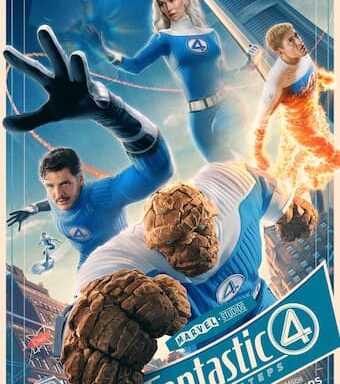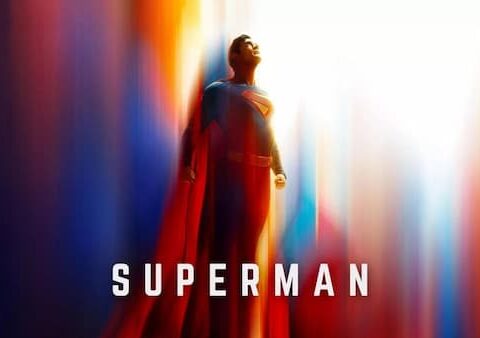Amid all the interest in the build-up to this month’s X-MEN: DAYS OF FUTURE PAST movie, my favorite all-time X-Man teleported back into the limelight last month with his own monthly title.
That prospect had been exciting me, of course; but when I learnt that none other than X-Men legend Chris Claremont would be writing this new series, my interest-level went through the roof.
Never mind the baffling panoply of X-Men titles running right now at Marvel, this was the one I needed to get hold of.
The 2010 X-Men: Second Coming storyline that centered around the Mutant Messiah Hope Summers was a genuinely superb chapter in X-Men history, but the sacrifice of Nightcrawler in order save Hope Summers’ life upset a lot of fans at the time.
While there are mixed opinions about the Second Coming storyline, I personally loved it on every level, adored Hope Summers in it, and also felt Nightcrawler got a suitably heroic ‘death’.
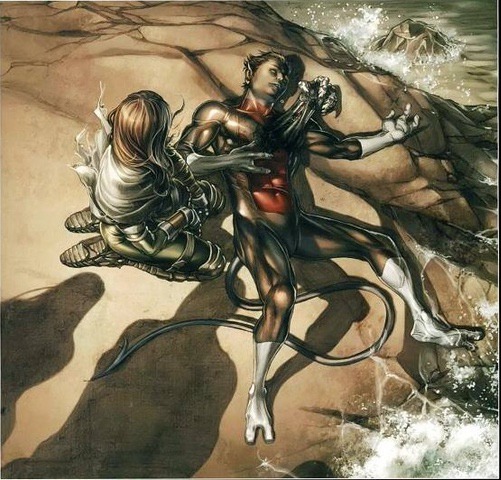
But of course it wasn’t death as we know it (and of course no one really dies in comics): with good reason, however, many pooh-pooh the ‘reset button’ tendency in comics when it comes to mortality. I tend to agree that cynically killing off characters for hype and sales while having every intention of bringing them back later is extremely tedious by now, even tacky; but in Nightcrawler’s case I think there is an exception.
More on that later.
Debuting in 1975’s GIANT-SIZE X-MEN #1 at a point when the X-Men were in decline among comic-book readers, Nightcrawler became an almost immediate fan-favorite, capturing hearts and imaginations alike with his distinctive look, style and characteristics.
Magneto aside, Kurt Wagner has always been my favorite X-Men character.
For one thing, I always liked that he was drawn more naturalistically and not like the exaggerated, macho, muscle-laden heroes that otherwise overfilled the panels of comic book pages and which always irritated me when I was first reading comics.
Nightcrawler, on the other hand, was never put across as an exaggerated object of physical strength, but was always more about powers and personality, his intelligence far more important than his physicality. He had the coolest look of anyone, at least in my initiation era (OK, maybe Archangel looked equally awesome).
For another thing he also had one of the coolest powers, his teleporting being something I fantasized about having when I was a kid, much more than Wolverine’s claws or Cyclops’ optic blasts. But it’s more than those surface things; it’s his winning personality that always did it. His singular style of humour, his idiosyncratic German phrases, and his quality of dialogue, which always left characters like Wolverine, Cyclops and Colossus, looking one-dimensional by comparison.
Unlike Wolverine, he wasn’t macho. Unlike Archangel or Iceman he wasn’t dull. And unlike Gambit he wasn’t arrogant.
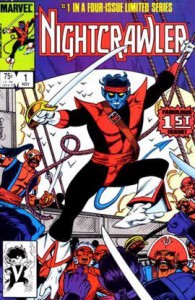
What also always worked about Nightcrawler was that, like Beast/Hank McCoy, he was one of the classic ‘mutant freaks’ – one of those who couldn’t hide his abnormal nature or blend in with humans even if he wanted to.
That always made him more sympathetic, more interesting, a figure; this archetypal ‘demonic’ figure in appearance, yet with the noble, endearing nature and deeply-held principles.
This was effectively hit upon in his sole X-Men movie appearance, X2, in which he and Mystique have the best dialogue in the film along those lines. The way Nightcrawler stole that film is in fact a testament to how great a character he is and how much he stands out from the crowd. A circus acrobat and literal carnival freak who was chased out of the village of Winzeldorf by a torch and pitchfork-wielding mob like the archetypal Frankenstein-like chimera, I maintain that Nightcrawler is the X-Men character most worthy of an ‘origins’ movie; but that’s a post for another time.
His religious faith has also become a central facet of his character over the years, making Kurt Wagner a rarity in comics in being a religious character that isn’t, however, portrayed as a nutjob or fanatic; rather his faith is simply a facet of his personality, a source of strength.
Although personally I preferred the Nightcrawler who’s religion wasn’t all that emphasised (that aspect to his character I think is something that works better when it’s a subtle element and not when it actually becomes central to storytelling), I nevertheless find it remarkable that a character with such a prominent Catholic disposition doesn’t end up being tiresome or annoying.
That, I suppose, is testament to his permanent likeability.

Some of my favorite Nightcrawler moments from my formative reading era were quieter moments, not big events or action moments at all. His brief appearance, for example, at the beginning of Uncanny X-Men #300, where Kurt arrives to aid the X-Men but has no desire at all to stick around and be involved any more than his minimal duty. I also loved the version of Nightcrawler in the classic Age of Apocalypse alternate-reality and remember that one of my favorite moments was a simple, quiet moment between Nightcrawler and Magneto in Astonishing X-Men #1 (1995).
Nightcrawler’s depth as a character means that, over the years, a lot of his most memorable moments haven’t been the kind of trumped-up showdowns or action sequences that define most other characters’ histories; but more subtle, character-based moments.
And his was often the best dialogue in an ensemble scene.
Nightcrawler’s first shot at a solo run was a four-issue limited series 1985, in which Nightcrawler, along with Kitty Pryde’s Lockheed, travels to several alternate dimensions, encountering strange beings such as the Bamfs (little Nightcrawler Mini-Me’s who feature prominently in April’s Nightcrawler #1).
A second four-issue limited series appeared in November 2002, focusing on Nightcrawler’s decision to become a priest and his attempts to fight a group of slave traders.
Marvel published its first intended ongoing Nightcrawler title in 2004, written by Roberto Aguirre-Sacasa with covers and pencils by Darick Robertson. The series was cancelled after only 12 issues, though ‘The Winding Way’ story arc saw Kurt assume possession (absorption, in fact) of Illyana Rasputin’s ‘soul- sword’, endowing him with an even cooler power-set; though actually I would rather he wielded it as an actual sword (and actually actually I would rather Magik – one of the many great, underrated characters in the X-Men world – just held onto it herself, but never mind).
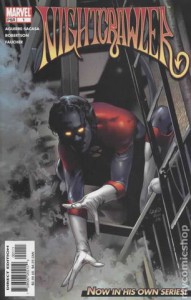
The new series, which we can hope will last longer than the 2004 effort, features Todd Nauck as artist for Chris Claremont’s steersmanship. Who better really than Claremont, who helped craft Nightcrawler into the character we know and love from the annals of Uncanny X-Men and Excalibur, to shepherd Kurt Wagner’s return to the land of the living?
Kurt Wagner’s restoration and the basis for this new solo title was preceded by March’s much talked-about Amazing X-Men #5, concluding “The Quest for Nightcrawler” (a tad reminiscent of ‘The Search For Spock’ in both title and themes, has to be said) in which Nightcrawler and his X-Men allies stage the decisive confrontation with his father Azazel. Nightcrawler’s return to life, however, comes at the price of his eternal, Christian soul, which furnishes his new situation with a potentially fascinating dimension with possibilities for rich themes and introspection amid the pages of Claremont’s series.
This is the reason I think Kurt’s ‘death’ and return isn’t the cheap or cynical exercise that a lot of comic-book deaths/returns are mocked for being; he got to have the heroic self-sacrifice, but his return from the afterlife comes with a price and will no doubt cast a long shadow over his mind and over the stories for a long time to come.
Amazing X-Men #6, meanwhile, sees Nightcrawler reunited with his mother Mystique.
I just read the new #1 a few days ago; naturally, it being Nightcrawler, I enjoyed it, but probably more for nostalgia than anything else. In keeping with most of the Marvel NOW first issues I’ve managed to check out recently – Daredevil, Silver Surfer and Ms Marvel among them – the pace is slow with not a great deal happening yet. Too much of the issue is taken up by fairly uninteresting fight sequences, when it might’ve been better served with more exposition on Wagner’s situation psychologically and on his perspective of what has been going on in the X-Men world.
Things will obviously grow and build, however.
Wolverine is also set to be a prominent fixture in the Nightcrawler series, which though appropriate given the Kurt/Logan dynamic, it does make me wonder if the X-universe’s adamantium-clawed poster-boy is primarily being attached to this Nightcrawler series just to draw interest from those who might not otherwise have gotten on board for the ride.
The inner monologue, not uncommon to Nightcrawler fans, opens the book really nicely though: “My name is Kurt Wagner. I helped fight the good fight on this world and many others. I helped save the universe. And then I died. But that isn’t the end of the story…”
And the “Bamfs” are cute; managing to be just on the right side of the dangerous line between cute and irritating. For that matter, Kurt’s reunion with Rachel Summers is also cute, the image of the two of them sitting in her apartment with framed pictures of the Excalibur and classic X-Men teams visible on the wall being a somewhat adorable touch for the nostalgist.
Kurt’s nature has always meant he is one of the X-Men characters with strong bonds to other characters in a way that isn’t true of necessarily everyone in the X-Men landscape; Nightcrawler is in safe, fatherly hands with Claremont and I would welcome this title making a lot of space for those relationships, particularly after all that has transpired; not just Logan, but Rachel Summers and Kitty Pryde in particular.
Prospective plot developments and story arcs notwithstanding, the real interest at this stage will be in Kurt’s reaction to the various schisms that have formed within the Mutant community since he was last present, particularly in regard to Cyclops’s new status as a fugitive leader of mutant revolutionaries and the fact that Kurt’s dear friend Kitty Pryde has gone over to that side. Wagner has always been something of a moral centre to the X-Men family and in this current climate of moral ambiguity and anti-heroism in the post-Xavier X-Men landscape, his return could provide an interesting redressing of the balance and create interesting moral conflicts and challenges.
And that there – the moral and ideological differences and conflicts – is at the heart of all the best X-Men writing over the decades. Wagner’s disapproval of Cyclops’s attitude was heavily evident even in the Second Coming story, for that matter; it’s bound to be even stronger by now.
Strangely enough, I too, like Kurt, have been absent from the contemporary X-Men world for some time and I too find myself baffled trying to get a handle on what’s been going on and what all the current ideological differences are about; perhaps Kurt’s eyes are the eyes I need to be looking through to get to grips with everything, which is all the more reason for someone like me to latch on to this new title.
And who better than Claremont to be my shepherd through these strange times?
At any rate, the X-Men world needs Nightcrawler, now more than ever it seems…

